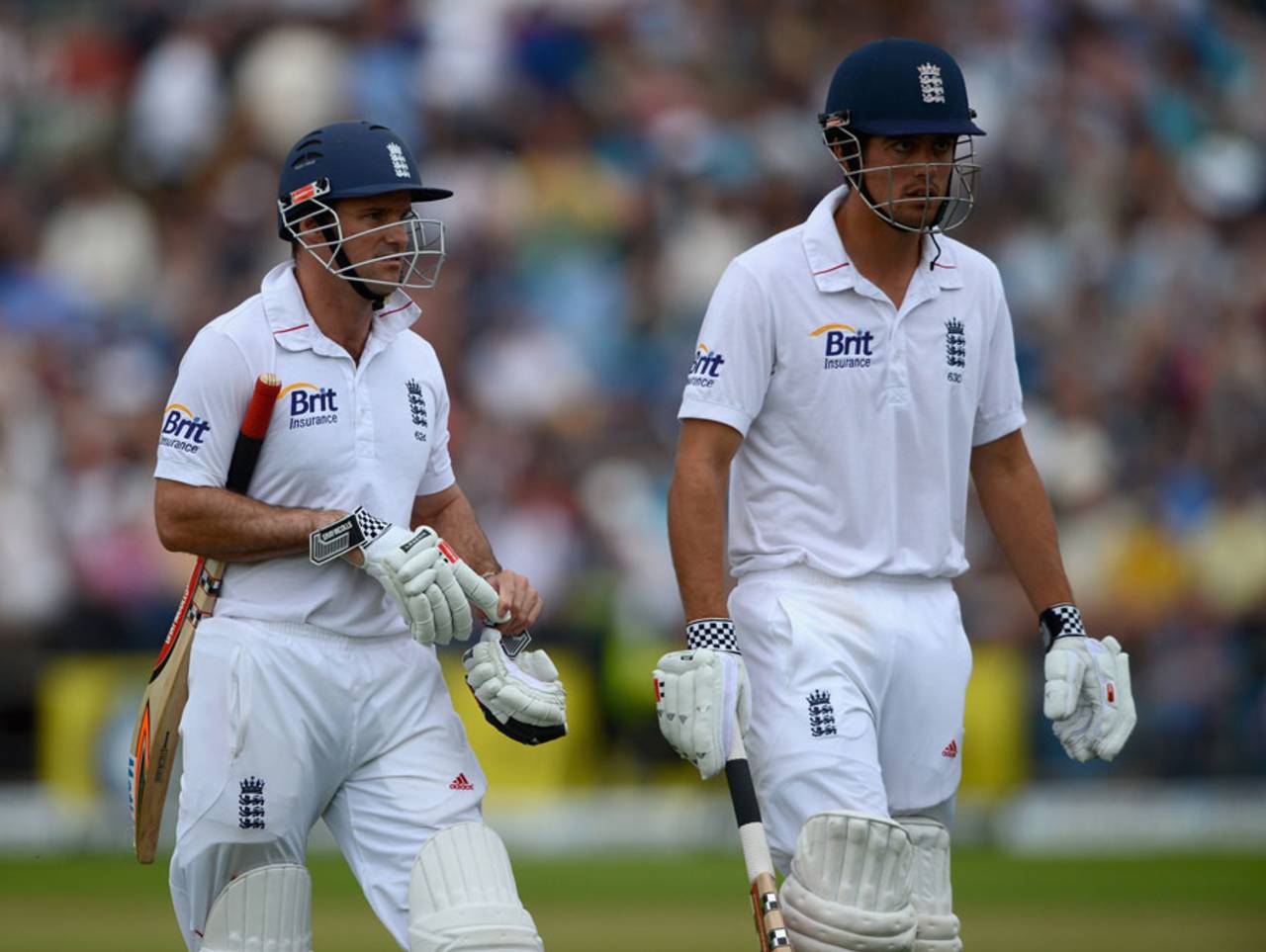The complex art of picking openers
An opening pair requires good form and a happy blend of personalities to succeed. Perhaps Cook needs a new partner in the Strauss mould
Jon Hotten
13-Aug-2014

Strauss and Cook are a hard act to follow for Cook and Robson • Getty Images
This is a series where both sides have played well, just not at the same time. It has been defined by the egregiously uneven nature of the contest: England were bad at Lord's, India even worse in Southampton and Manchester.
Symptomatic of these struggles is this run of figures: 33, 9, 49, 11, 22, 40, 12, 55, 17, 22, 26, 8, 21, 26. It is the chronological list of opening partnerships by England and India so far, and there's trouble at the top. There has been one stand of more than 50 - between Alastair Cook and Sam Robson in Southampton. which means that no innings from either side has begun from a position of strength. Between them, the five men to have opened this summer have batted 28 times for a return of one century and five fifties. Seventeen of those innings have resulted in scores of 25 or less.
Although two players, M Vijay and Cook, are averaging more than 40, only Vijay can really claim to have succeeded: his is the one century, and he has a 95 and one other half-century too. Cook made 165 runs at the Ageas Bowl and 54 from the other three matches. Shikhar Dhawan has flickered like a faulty bulb, his light extinguished each time it appeared to be coming on, while Robson has become so tightened by tension and fear that he can barely bat in any meaningful sense. The dimensions of his world have shrunk to mere survival. Poor old Gautam Gambhir pulled the really short straw - having had no cricket at all, he caught Stuart Broad and James Anderson at their very best in helpful conditions.
Opening partnerships are often emblematic of their teams. Stable sides barely have to think about them, and yet the chemistry is neither predictable nor repeatable. It is unique to each pair.
India and England are both trying to replace their most successful combinations. Cook and Andrew Strauss stand third on the all-time list of runs scored as an opening partnership - 4711 at 40.96, while Gambhir and Virender Sehwag lie fifth with 4412 at a spectacular 52.52. Yet there were few common reasons for their success, and their dynamics were wildly different.
Bowlers not only had to respond to Sehwag's immortal and irreducible credo of "See ball, hit ball", they had to adjust their line radically to trouble Gambhir. By contrast, Strauss and Cook not only stood the same way round, they had the same favourite shots: the cut, the pull, the clip off the pads. And yet they worked too.
Therein lies the dilemma of trying to find new openers. For a partnership to become established both need to be in reasonable form at the same time, and there must be a blend of personalities. England's problem with Nick Compton, for example, appears to be about temperament as much as technique.
It is a complex equation, made tougher in Cook's case by his duties as captain and the transition to becoming the senior partner in the pairing. The odds on his partnership with Robson survival are dropping. Aside from runs at The Oval, the schedule would seem to be its best hope. Test cricket disappears until the spring after that, and given the promise of all of the usual heartaches and traumas that visit England come the World Cup, a frictionless reintroduction in the West Indies may suit everyone. For now, the thought of him facing Mitchell Johnson and Ryan Harris next summer seems like car-crash viewing.
Cook has sought a like-for-like replacement for Strauss, but perhaps a new liaison with a shot-maker like Alex Hales or Adam Lyth would offer the captain a clean break with the past and a simple blueprint of how he himself should bat.
India meanwhile have found a player in Vijay, and given the conditions they have faced and the skill levels of Anderson and Broad, one out of two represents something of a result.
Jon Hotten blogs here. @theoldbatsman